Bulging discs and back pain is very common in people of all ages – mostly adults. But luckily, there are a few useful and safe exercises for a bulging disc that will resolve the symptoms sooner.
A herniated disc is a ruptured form of a bulging disc and has severe complications at times. And these bulging discs can cause severe pain in the spine that you might have to surgically extract the disc.
The origin of pain depends on where the bulge is formed. And similarly, how far the pain or other neurological signs spread depends on where you have a bulge in the spine.
What Is a Bulging Disc?
Now before we proceed with our discussion on safe exercises related to bulging discs, you should first know what a bulging disc means.
If you remember the normal anatomy of a spine, you would know about the intervertebral discs.
So, a bulging disc, as the name suggests, bulges out of the spine causing pain, numbness, and tingling in the associated parts of the body.
Safe Exercises For Bulging Disc
There are a few risk factors that can result in pain in the back. For example, working for long hours, any sudden movement of the spine, accidental events, and heavy lifting.
However, you have to remember that not every back pain arises due to a bulging disc. Sometimes the back pain is very mild and goes away with time or with less-strenuous exercises.
Now how would you know you have a bulging disc?
Well, the first and most prominent symptom of a bulging disc is pain. You may as well experience tingling and numbness in the affected area.
Mostly, the disc bulges out from one side on the spine only, that is, either left or right. Hence, you will have symptoms on that side of the body only. And surprisingly, sometimes you might not feel anything at all!
Now let’s discuss some safe exercises for a bulging disc to minimize pain and other symptoms.
Neck Stretch
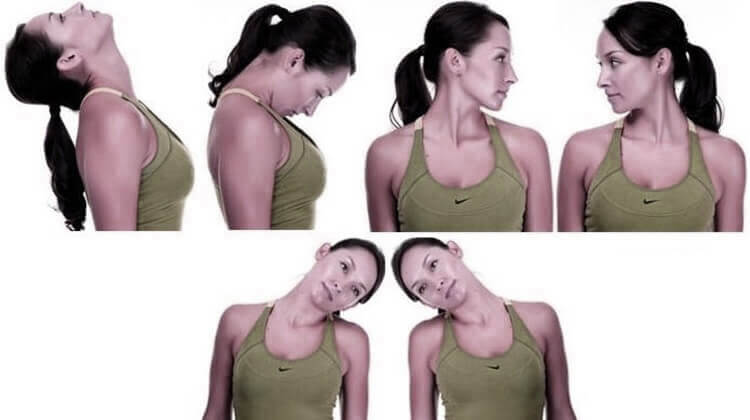
People with a cervical bulging disc can perform the following exercises to relieve pain:
- Bend the head forwards and then backward, like when you nod.
- Tilt the head to one side keeping your ear close to the shoulders. Repeat on the other side.
Note: Make sure to feel the stretch when you move your head. If there is no feeling of pulled-muscles, flex/extend or tilt it further. And if even after that you don’t feel the stretch, carefully use your hand to push the head further.
Back Flexion Stretch
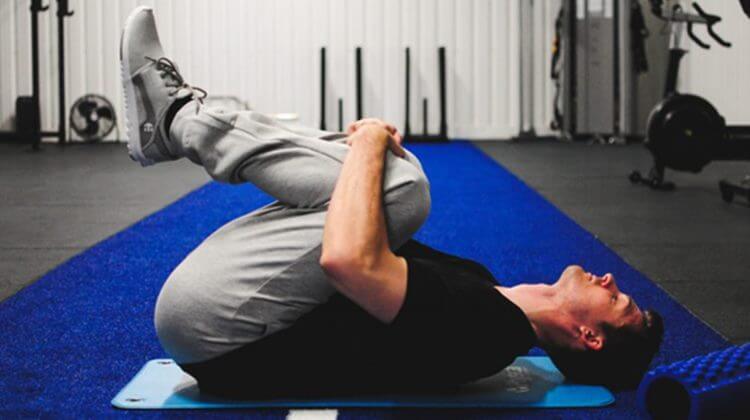
Back flexion is usually important for people with lower back pain or injury. Follow these steps to do it the right way.
- Lie down on a floor mat with a straight back.
- Bend your knees towards the body and hold them above the chest.
- Slightly flex your neck forwards till it lies close to the bent knees.
- Hold the position for a few seconds and repeat it many times.
Knee To Chest Stretch
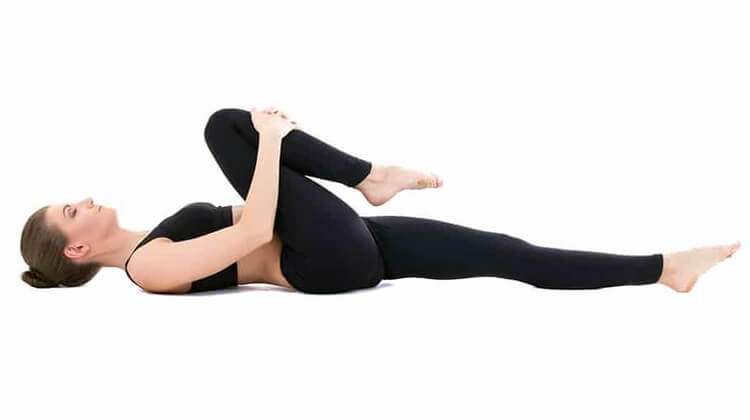
This is a very common and safe exercise for bulging disc patients. Almost everyone with a bulged disc is asked to perform a knee-to-chest stretch in routine.
- Lie with a straight back.
- Place both heels on the floor.
- Hold one knee from behind and bring it up close to the chest.
- Repeat the same for the other leg.
Note: As you see, you have to perform a knee-to-chest stretch for both legs, separately. This helps in relaxing the low back while gently stretching the leg muscles on each side.
Cobra Pose
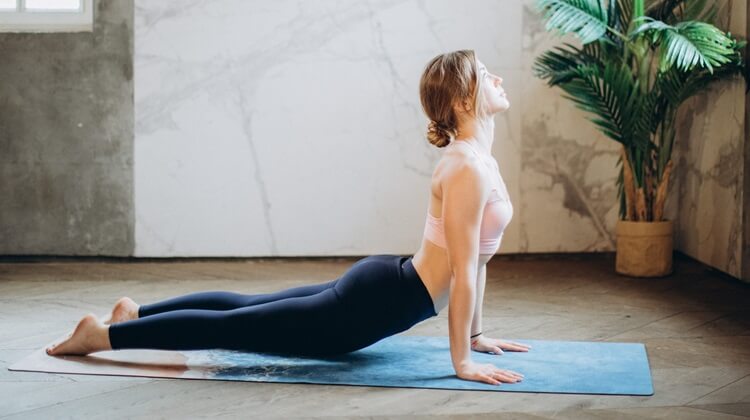
Even though hyperextension of the back is not a safe exercise for a bulging disc, however, the Cobra pose has a big hand in pressing the bulge out nucleus inside, relieving stress.
- Lie on your belly (prone position) and place the hands close to the upper abdomen.
- Inhale and slightly push your head up while keeping the elbows flexed. This is a half-cobra pose.
- Stay in his position for 10 to 15 seconds. Exhale and lower down the body.
- Now to achieve a full-cobra pose, inhale and fully extend the elbows.
- Putting stress on the palms, raise your head as high as you can.
- Exhale and come back to the normal prone position.
- Repeat the exercise.
Piriformis Stretch
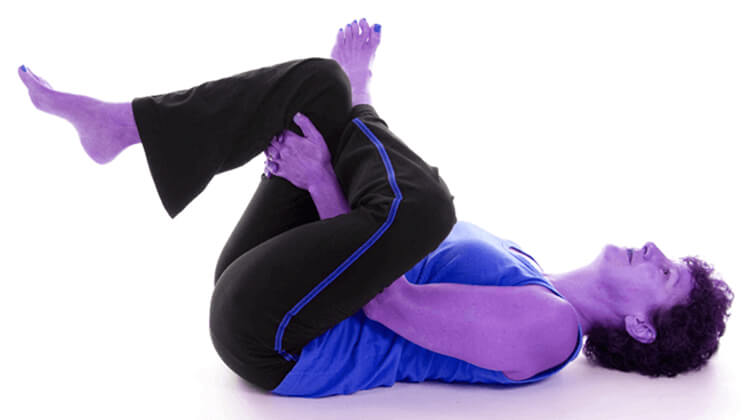
Piriformis stretch helps in strengthening the buttocks. Here is how you do it:
- Lie with a straight back. Flex your knees and keep the sole straight on the floor.
- Now use your hand to cross one leg onto the other in a way that the crossed leg’s ankle lies on the knee of the other leg.
- Hold a band against the back of the thighs and pull them towards your chest.
- Switch and repeat.
Plank
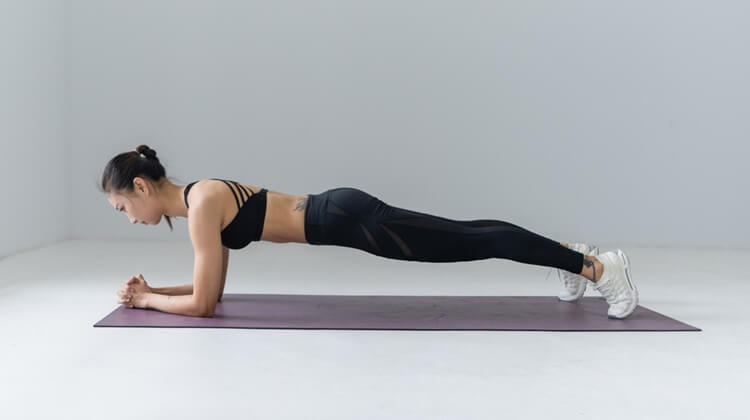
Plank is extremely important to strengthen the core muscles that will then stabilize the spine, thus, improving posture.
- Lie on the mat in a prone position.
- Place your forearm and toes on the floor.
- Push your whole body up with the help of the forearm and toes only.
- Hold for 15 seconds, advancing to 30, and then two minutes per rep.
Note: Your back should remain straight during the exercise.
Exercises To Avoid
You should avoid any exercise that involves the extension of the back. This is because the hyperextension of the back will put pressure on the bulging disc, worsening it even further.
Moreover, if you are feeling pain with any of the above-mentioned exercises, discontinue the exercise and consult a physician.
Following are some physical exercises you need to avoid:
- Heavy lifting
- Jogging
- Jumping
- Martial arts
- Backward bending
Pro Tip: Begin with light, less-hectic exercises. And gradually head towards advanced exercises to reduce pain.
FAQs
No exercise or yoga treats a bulging disc. However, if your doctor has cleared you of any Major injuries and you are not experiencing any discomfort during the exercise either, doing yoga or exercise will not harm you.
Absolutely! All the exercises explained above help in reducing pain and other symptoms of a bulging disc, thus, improving the disc bulge.
Conclusion
So in short, many exercises help the bulging discs patients in relieving the pain. However, you must always consult your doctor or physician before starting an exercise.
These were some safe exercises for bulging discs. Hopefully, your mind is clear and you are not scared about your condition anymore.
